




- BRNN
- BRI News
- BRNN News
- Database
Official Documents Polices and Regulations
Inter-government Documents International Cooperation BRI Countries
Business Guide Economic Data BRI Data
Trade
Investment Projects Latest projects
Cases - Content Pool
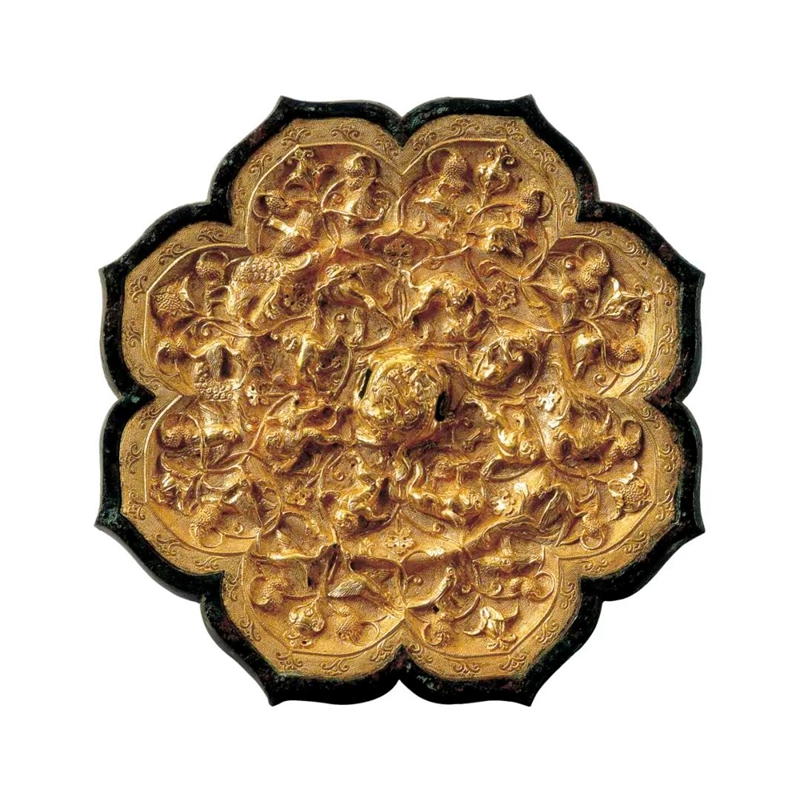
Photo shows a Tang Dynasty (618-907) gold-backed bronze mirror featuring auspicious animals housed in the Xi'an Museum in Xi'an, northwest China's Shaanxi Province. (Photo courtesy of the Xi'an Museum)
Among the more than 120,000 cultural artifacts housed in the Xi'an Museum in Xi'an, northwest China's Shaanxi Province, there is a crown jewel—a Tang Dynasty (618-907) gold-backed bronze mirror featuring auspicious animals, designated as a national first-class cultural relic.
When first unearthed, this exquisite mirror looked nothing like its current pristine state. Rust stains covered its surface, nearly two-thirds of the high-relief decorative patterns on the back were obscured by calcified deposits, and green copper corrosion had spread around the mirror knob and edges. Only through meticulous, science-based cleaning and conservation by cultural relic restorers has this ancient treasure regained its former splendor.
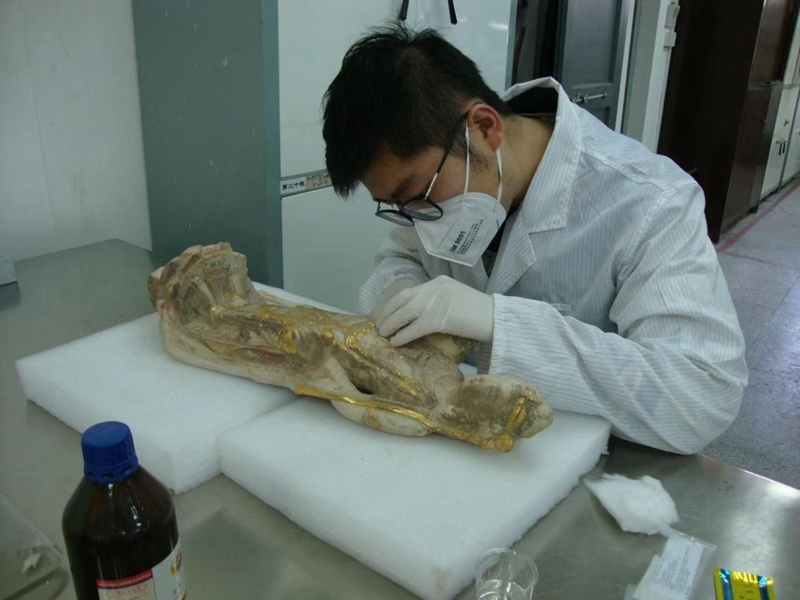
Xu Nuo, 36, deputy director of the cultural relic restoration department of the Xi'an Museum in Xi'an, northwest China's Shaanxi Province, restores a cultural artifact. (Photo courtesy of the interviewee)
Xu Nuo, 36, deputy director of the museum's cultural relic restoration department, played a key role in restoring the gold-backed mirror.
Over his decade-long career, he has participated in the restoration of hundreds of cultural artifacts.
"Cultural relic restoration isn't simply about pasting and patching. It involves extensive material testing and analysis, with the goal of restoring artifacts as close to their original state as possible," Xu said.
His daily routine centers around lab work, with some procedures requiring hundreds of repetitions to achieve the desired results.
For Xu, restoration serves purposes beyond simply extending an artifact's lifespan and preserving its intrinsic value—it also prepares these treasures for future conservation.
The surge in "museum fever" in recent years has brought cultural relic restoration work into the public spotlight. In Xi'an, a city rich in cultural artifacts, a growing number of young professionals like Xu are entering the restoration field through various pathways.
Zhao Linjing, 38, is a representative inheritor of filigree techniques, an intangible cultural heritage item, in Beilin district, Xi'an.
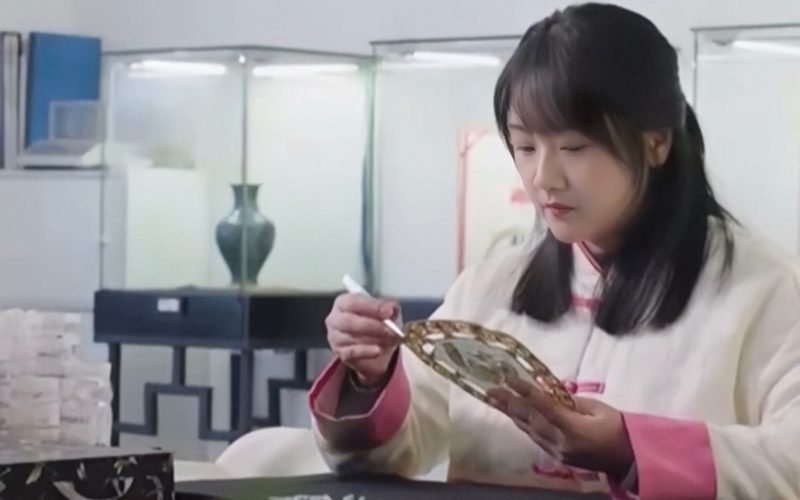
Zhao Linjing, a representative inheritor of the filigree techniques in Beilin district, Xi'an, northwest China's Shaanxi Province, works on a replica of a cultural artifact. (Photo courtesy of the interviewee)
She has contributed her specialized skills, including the ability to draw gold wire to 0.1 millimeters in diameter and twist it into intricate filigree patterns, to certified cultural relic restoration projects.
During her career spanning more than a decade, Zhao's most challenging restoration involved a gold filigree vase from the Ming Dynasty (1368-1644). The project required working with gold wire measuring only 0.1 millimeters in diameter on an openwork section of the vessel.
Given the irreplaceable nature of the precious artifact, Zhao designed custom threading tools and a specialized fixture to safely secure the vase. The painstaking restoration process took over two months.
Zhao's dedication has yielded tangible rewards beyond the satisfaction of preserving cultural heritage. Her fine filigree techniques have gained market recognition, attracting enthusiasts and fellow craftspeople seeking apprenticeships.
Social media platforms have become valuable tools for sharing her expertise, with livestream sessions sometimes drawing over 150,000 viewers shortly after going live.
Capitalizing on this momentum, Zhao now operates educational tour activities and creates museum-licensed replica jewelry that resonates strongly with consumers.
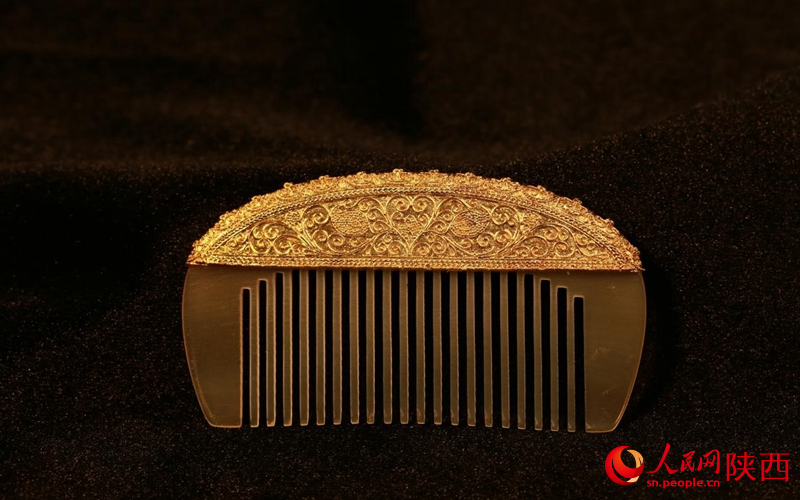
A replica recreated by Zhao Linjing based on a cultural artifact housed in the Shaanxi History Museum, Xi'an, northwest China's Shaanxi Province. (People's Daily Online/Wang Li)
The combination of market enthusiasm, social media influence, and policy backing has diversified and strengthened the cultural relic restoration workforce.
Shaanxi Province continues advancing talent development through education, training, system building, and institutional innovation, involving universities, vocational schools, private practitioners, and cultural institutions.
Zhai Congwen, 25, currently pursuing her doctoral degree at Northwest University in Xi'an, exemplifies the academic dimension of this field.
She has already participated in the restoration of bronze artifacts from the Western Zhou Dynasty (1046 B.C.-771 B.C.), and is now working with her supervisor to analyze and evaluate multilayer mural samples from a Central Asian country.
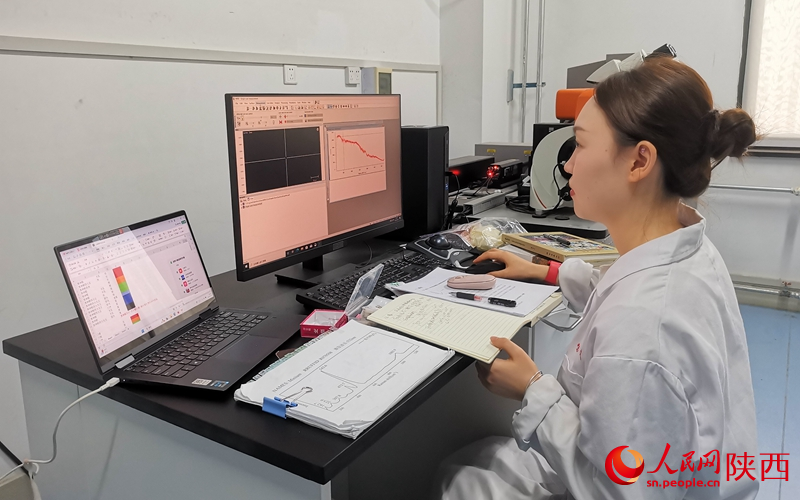
Zhai Congwen, who is currently pursuing her doctoral degree at Northwest University in Xi'an, northwest China's Shaanxi Province, analyzes cultural relic samples in a lab. (People's Daily Online/Wang Li)
Although the mural restoration project represents new territory for Zhai, and she cannot yet participate in core restoration work due to her junior status, she approaches the opportunity with determination and diligence.
Her preparation involves conducting hundreds of sample tests in the lab, self-studying painting techniques, and intensively learning world history and cultural knowledge.
"This work transcends mere craftsmanship—it requires scientific precision and comprehensive knowledge. After finishing my studies, I hope I can truly engage in a dialogue with cultural relics," Zhai said.

Tel:86-10-65363107, 86-10-65368220, 86-10-65363106